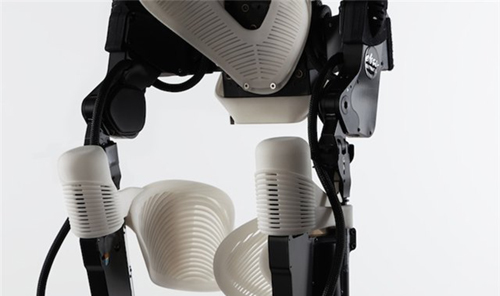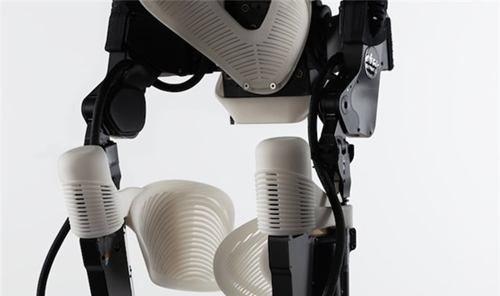3D printing is very versatile, it can make perfect connected parts and create a harmonious life. 3D Systems has been committed to exploring new ways to apply these connecting parts to the improvement of society and the happiness and well-being of residents. This is the motivation of 3D Systems' recent cooperation with Ekso Bionics. They want to combine the advantages of the two companies to connect patients with lower body paralysis and magical machinery to help them stand back.
At first glance, the Ekso? Bionic suit seems to appear in science fiction: the rigid exoskeleton of the human structure and the metallic luster of the robot. This extraordinary product is very real and is the work of Ekso Bionics. It is gradually changing one's life by improving the weakness of the lower limbs. Ekso is committed to helping those who cannot walk have the opportunity to walk independently again.
Many of us take standing and walking for granted, but for those who cannot leave a wheelchair, being able to stand and walk means everything. "When I put on Ekso's bionic suit for the first time, with the help of the suit, I stood up. It was a wonderful moment." Amanda Boxtel said in a video from Ekso Bionicsg.
20 years ago, Amanda suffered a severe spinal injury on the snowy Colorado ski trails. She had to use a wheelchair for a long time until Ekso Bionics asked her as a test subject for the bionic suit.

After meeting Amanda, 3D Systems CEO Avi Reichental is ready to provide her with 3D printed kit parts, which will be more suitable for Amanda and integrate her personal body shape into the exoskeleton design of the kit. At that time, 3D Systems began to collaborate with Ekso Bionics to use 3D printing to connect humans and machinery more closely. (Left image: Amanda performs a body scan for her 3D printed Ekso suit parts)
This process starts with full 3D scanning of Amanda's body and transforming it into a 3D substrate, which will become the basic part of 3D printing. Designers Scott Summit and Gustavo Fricke of 3D Systems digitized Amanda's scans and then created CAD models of the new parts, which were specifically designed for a few specific points on the bionic suit: calves, thighs and spine. In order to seamlessly dock with the complex mechanical components on the suit, Fricke designed these components, which can provide Amanda with a simple and comfortable feeling, and can also be stably docked with Amanda's body.
Function is the main consideration, but the design team also hopes that when the suit is connected to Amanda's body, it can be visually satisfactory. So the parts are combined with beautiful patterns, just like the muscle belt has a streamlined outline. This striped pattern makes the suit more flexible and airy.

After making these models, in order to test its compatibility and function, they printed samples in 3D overnight. After the successful assembly of each component, the design team made some necessary modifications to the design. Once the iterative design process is complete, the final part will be printed using a laser sintering (SLS) machine from 3D Systems. SLS was chosen because it can print light and durable parts. (Left image: 3D printed part of the suit)
This project helped Amanda and her bionic suit to successfully run in visually and mechanically. On November 15, 2013, when Amanda appeared on the Budapest stage wearing this conceptual mechanical suit for the first time, she got up from the wheelchair and walked normally. The atmosphere of the audience reached the climax!
"This project represents the victory of human creativity and technology," Amanda said, "I am very happy and excited."

![]() Tel:+86 135 7086 9158
Tel:+86 135 7086 9158![]() Tel:+86 135 7086 9158
Tel:+86 135 7086 9158


